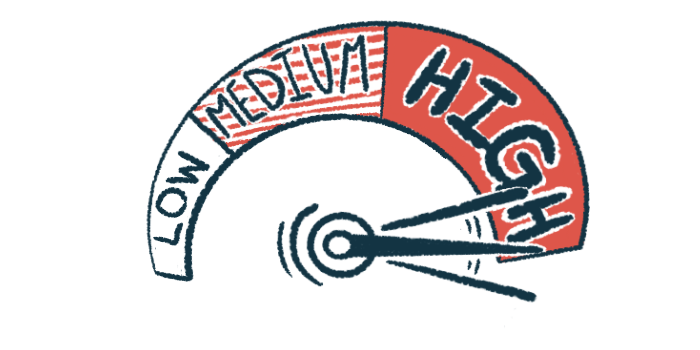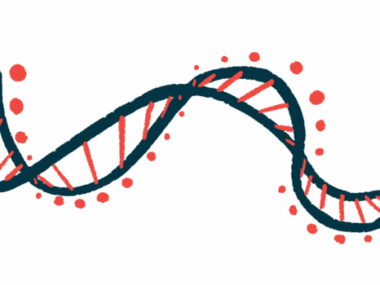Salivary gland ultrasound may assess primary Sjögren’s activity
More severe damage to glands associated with lymphoma risk factors
Written by |

More severe salivary gland damage and lymph node enlargement detected by ultrasound examination are associated with higher disease activity in primary Sjögren’s disease, a study in South Korea reports.
Also, researchers found that more severe salivary gland damage was tied to a higher prevalence of laboratory risk factors for developing lymphoma, a type of blood cancer that affects immune cells, and extraglandular manifestations related to developing lymphoma.
“Our results showed that [salivary gland ultrasound] could be utilized as a valuable tool in various clinical assessments, including salivary gland secretory function, systemic disease activity, and quality of life of [primary Sjögren’s patients], extending its scope beyond diagnostic utility,” the researchers wrote. The study, “Clinical value of salivary gland ultrasonography in evaluating secretory function, disease activity, and lymphoma risk factors in primary Sjögren’s syndrome,” was published in Clinical Rheumatology.
Sjögren’s disease occurs when the immune system mistakenly launches an inflammatory attack against the glands that produce tears and saliva, resulting in dry eyes and mouth. About 30%-40% of patients also have extraglandular disease manifestations that affect other tissues and organs.
A salivary gland ultrasound (SGUS), which is a noninvasive imaging method to evaluate structural changes in the salivary glands, has been assessed as a diagnostic tool for primary Sjögren’s as an alternative to an invasive minor salivary gland biopsy.
Using SGUS in primary Sjögren’s
“However, its broader clinical value remains unclear,” wrote researchers in South Korea, who analyzed the records of 150 patients with primary Sjögren’s, who’d been followed at Seoul St. Mary’s Hospital between January 2019 and July 2023, to further assess the clinical significance of SGUS. The patients had a mean age of 50.9 and most (92%) were women.
Most (73.3%) had an unstimulated whole salivary flow rate of 0.1 mL/min or lower and moderate changes in salivary gland structure, as assessed by the SGUS OMERACT scoring system. This system assesses the severity of salivary gland damage on an ultrasound examination on a scale from 0 to 3, with higher values indicating more severe damage.
Most (68.7%) also had a focus score of 1 or higher in salivary gland biopsy, indicating immune cell infiltration, while 38.7% had an enlargement of salivary gland lymph nodes, or lymphadenopathy, defined as lymph nodes measuring at least 1 cm (about 0.4 inches) in diameter.
Overall, higher salivary gland damage detected by ultrasound was significantly associated with higher damage detected in salivary gland biopsies and higher scores of disease activity, according to the European Alliance of Associations for Rheumatology (EULAR) Sjögren’s Syndrome Disease Activity Index (ESSDAI). More severe salivary gland damage was also associated with poorer gland function, as assessed by salivary flow rate.
Higher SGUS scores also correlated with more severe dryness, as assessed in the EULAR Sjögren’s Syndrome Patient Reported Index (ESSPRI), in both the parotid and submandibular salivary glands.
Compared with patients without lymph node enlargement, those with lymphadenopathy in their parotid or submandibular glands had a significantly lower stimulated salivary flow rate and a higher total ESSDAI score.
Assessing risk of lymphoma
Considering people with primary Sjögren’s have a 15 to 20 times higher risk of developing lymphoma, researchers also assessed if SGUS scores were associated with lymphoma risk factors.
They found that patients with a total SGUS score of 6, corresponding to more severe damage in the parotid or submandibular glands, had a higher prevalence of laboratory risk factors for lymphoma, including having higher levels of IgG antibodies and testing positive for certain self-reactive antibodies.
They also found that patients who had a total SGUS score of 6 in the parotid glands had a significantly higher incidence of Raynaud’s phenomenon and cutaneous vasculitis, which are extraglandular manifestations of Sjögren’s associated with developing lymphoma. In Raynaud’s phenomenon, blood vessel spasms limit blood flow to the fingers and toes, causing skin color changes, numbness, and other abnormal sensations. Cutaneous vasculitis is driven by inflammation of small blood vessels in the skin.
“Based on our study results, clinicians are advised to maintain a high suspicion of lymphoma and consider further diagnostic workup, including biopsy, in [primary Sjögren’s patients] exhibiting the highest SGUS grade accompanied by known lymphoma predictors,” the researchers wrote.






